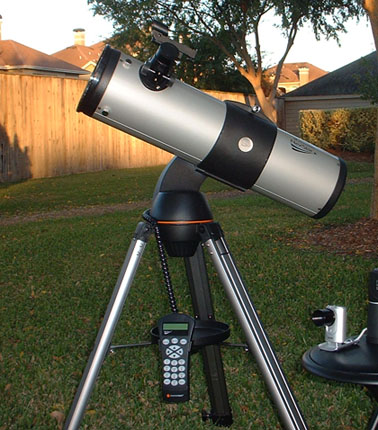While the sky certainly has not yet become crystal clear, it has cleared up enough to at least be interesting. Here are some shots from this AM using the three available lenses.
Looking south over “Little Mountain,” with the clouds lit up by the lights of Ogden/SLC (new 55mm lens)

Looking south over “Little Mountain,” with the clouds lit up by the lights of Ogden/SLC (old 18-55mm lens)
Looking towards Little Mountain with the zoom lens
Looking towards the Wasatch Mountains, with a neighbors house. Everything lit by the clouds reflecting city lights. 30 second exposure. (zoom lens)
Orion with the new lens. Note the persistance of clouds, in this case lit up by the lights of ATK. Hopefully they’ll soon go out of business, and then the night skies can be darker.
Orion Nebula with the zoom lens.
8 Responses to “Photography at 2AM”
Sorry, the comment form is closed at this time.






Two things are very noticeable about the digital camera versus film ones for astronomical photography:
1.) It really does show up the different star colors well, far better than film.
You can even start making out the colors of the Orion Nebula in that lower shot.
2.) It does a lot better job of showing dim stars while not letting the bright stars wash them out in the picture. Once the Celestron shows up, you should be able to get shots of the moons of Jupiter, and maybe Saturn as well.
It really amazes me just how dim of objects show up well given the short exposure times you are using. The CCD in the camera must be very sensitive indeed. BTW, you may want to play around with some filters to cut down skyglow from nearby lights when photographing stars and planets. These may adversely affect photographing nebula though, as they also emit light in the part of the spectrum that streetlights do.
> Once the Celestron shows up, you should be able to get shots of the moons of Jupiter, and maybe Saturn as well.
Everything is on-hand, and I’ve taken a few shots through the scope. The problem remains focus, coupled with the shakey base. The focussing knob is really pretty coarse, and I’ve failed to get an in-focus shot of something as simple as a tree a quarter mile from here.
What Celestron you got, then??
Regarding focussing, you need a Hartmann mask, see here :-
http://www.cloudynights.com/item.php?item_id=518
Yeah, is the mounting yoke a “U” shape or does it just join to the scope on one side?
Regarding that Hartmann mask…I don’t know Scott, that thing’s construction looks pretty involved… sure you can handle that? 😉
It’s one like this:

Good for lookin’ though, sucks ass for photography. Too flimsy with a big-ass camera hanging off the side. And focus is a problem. Even with a mask, the problem is that the actual mechanics of it seem to be too coarse.
Ah-ha, that explains it! What you’ve got there is a low f-ratio “Rich Field” Newtonian reflector, like is used for optical astronomy at fairly low magnification to show things like galaxies, nebula, and star clusters.
What you want is something along the lines of a Celestron 5
Schmidt-Cassegrain telescope that uses a folded optical path and where the camera sits at the back of the scope rather than on its side:
http://www.funkhousers.org/eclipse/equipment/c5plus.html
Check out E-bay, as they have a lot of Celestron scopes for sale.
The C-5 would be a lot easier to transport than a C-8, which is fairly large and heavy; so if you were going to lug it around for nature photography as well as do astronomical photography with it, that would probably be the way to go.
> What you want is something along the lines of…
… an income. I’ve spent as much as I’m going to, and much more than I should have.
The Hartmann Mask looks like a good option then, as well as some way to remotely activate the camera so as to cut down on vibration when you are taking the photos.
If you were always going to take your star photos from the same place, you could drive a big diameter metal pipe a few feet into the ground, fill it with either sand or concrete and mount the telescope atop that in some sort of removable way.